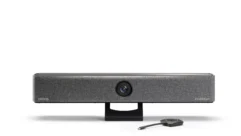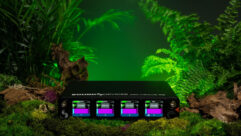Wireless Microphones Under Siege—Again!
Oct 16, 2013 12:07 PM,
By Mark Brunner
With the FCC orchestrating another UHF frequency band re-pack, the time to mobilize and protect wireless microphones is upon us once more.
To quote Thomas Jefferson, “Eternal vigilance is the price of liberty.”
Having won significant protections from the FCC as a result of the 2010 white spaces proceeding, wireless microphones have become more reliable—and more ubiquitous—than ever. However, wireless microphone users and manufacturers now have reason for new concern.
In the pursuit of sufficient RF spectrum to meet the National Broadband Plan, the Federal Communications Commission (FCC) is charged with creating significant open bandwidth to meet society’s insatiable demand for wireless Internet access. As part of this process, the FCC is again considering the type and degree of spectrum access that will be available to various devices, including wireless microphones.
This proceeding is a result of the Middle Class Tax Relief and Job Creation Act of 2012. Part of that law created the authorization for an FCC-run incentive auction of UHF spectrum, voluntarily relinquished by over-the-air TV broadcasters in exchange for a portion of auction proceeds. In addition to helping meet the massive bandwidth needs of smartphones and tablet computers, this auction will fund a new nationwide public safety network and result in another re-packing of the UHF band.
Since the 1970s, wireless microphones—technically known as “low powered auxiliary stations”—have operated under Part 74 of FCC rules, using the vacant, unused spectrum in between television channels. Under the Part 74 rules, broadcasters and motion picture makers are considered priority users, and can license their systems. All other users have been unlicensed. Over time, wireless technology advanced, creating a vast new population of wireless users that include touring sound, live theater, corporate boardrooms, theme parks, houses of worship, government offices, and education facilities.
As part of the transition to digital television (DTV) broadcasting, the 700-MHz band (technically, 698-806 MHz) was auctioned off, mostly to large telecom companies such as AT&T and Verizon, with significant space reserved for a proposed national public safety network—a critical national goal in the post-Sept. 11 world. Wireless microphones (and TV stations) moved and survived.
Concurrently, the FCC was considering new rules for shared access to the remaining vacant TV channels as part of the white spaces proceeding. This shared access was granted, but as a result of our industry’s technical input and lobbying, the FCC set aside two “safe haven” UHF channels in every market for wireless microphones. In addition, a group of synchronized national geolocation databases was established to ensure priority access to additional vacant TV channels for large scale wireless microphone operations and events. Licensed users have the ability to use the database in near realtime, but unlicensed users must seek FCC permission 30 days in advance.
Unfortunately, those two safe channels for wireless microphone operators—established by the FCC just three years ago—are now at risk. Predictably, telecom and computer technology companies are lobbying the FCC for access to every bit of bandwidth and every degree of priority they can get, including the channels reserved for wireless microphones. Therefore, it is absolutely critical that the FCC be reminded of the vital role that wireless microphones play as key economic drivers in communications and content creation across our society.
To that end, U.S. Rep. Bobby Rush (D-IL) has introduced a bill, H.R. 2911, the Wireless Microphone Users Interference Protection Act of 2013. This proposed law would establish (or, in effect, maintain) two full UHF channels (12MHz of bandwidth) exclusively for wireless microphones—sufficient for a majority of users. Additionally, H.R. 2911 calls for expanded eligibility for parties to obtain wireless microphone licenses and the resulting realtime access to the national geolocation database.
Convention centers, houses of worship, education facilities, lodging facilities, restaurants, museums, theaters, and most live performance venues would be granted this eligibility, finally recognizing the important role of wireless professional audio outside the broadcast and movie industries.
Given the fact that the FCC created the current rules of the road for wireless microphones so recently, it seems self-evident that they should retain their protected status. However, in the face of the insatiable demand for bandwidth, wireless users would be well advised to heed the words of Thomas Jefferson.
Congressman Bobby Rush is inviting cosponsors from both sides of the aisle for the Wireless Microphone Users Interference Protection Act of 2013, and the bill has received support from major organizations across a wide variety of industries. We encourage all audio professionals to write their own representatives (find yours at www.house.gov) to support H.R. 2911. The continued operation of your wireless systems—and those of your clients—depends on it!
Mark Brunner is Shure’s senior director of Global Brand Management. In nearly 25 years at the company, he has held management positions in various disciplines, including international marketing, product management, public relations, and government affairs. He is the current president of PAMA, the Professional Audio Manufacturers Alliance, and owns a recording facility near Chicago.










